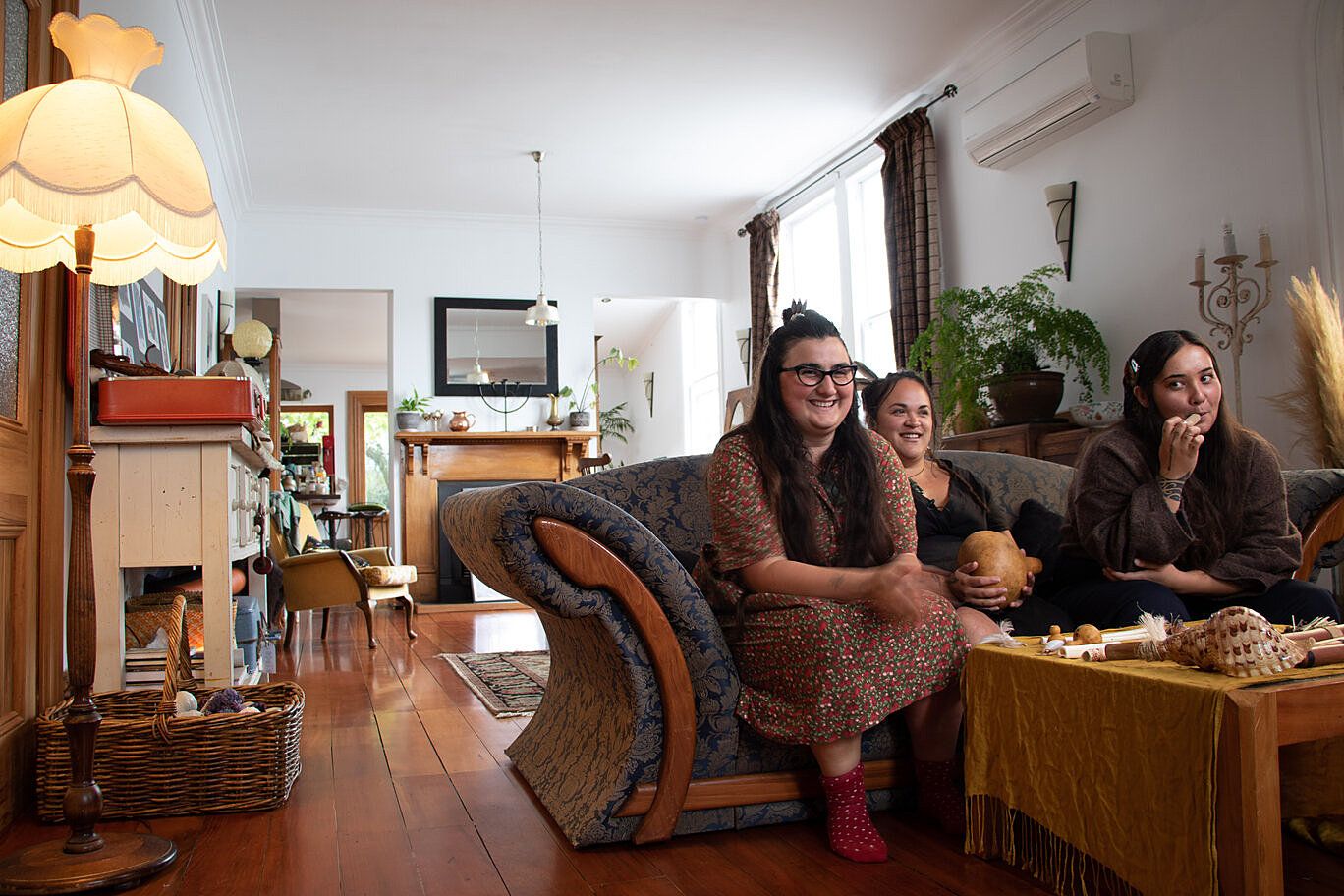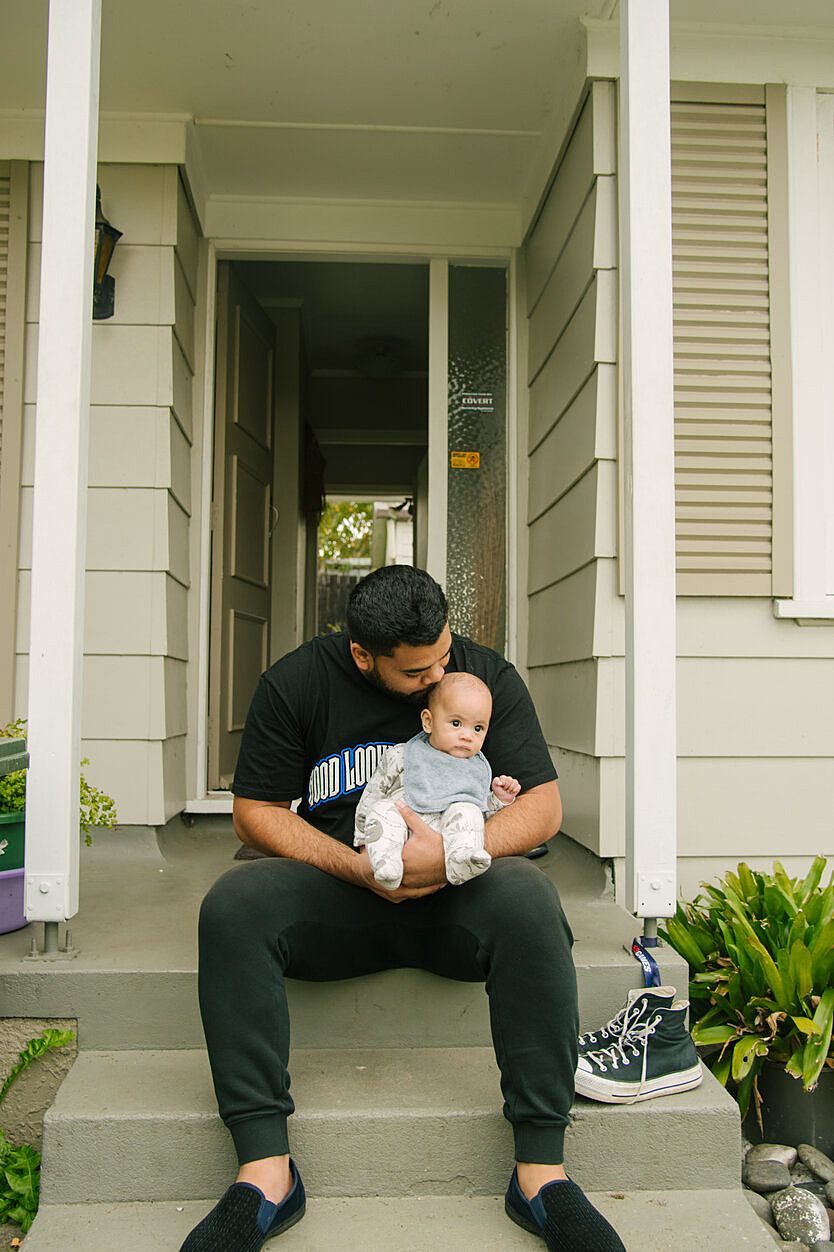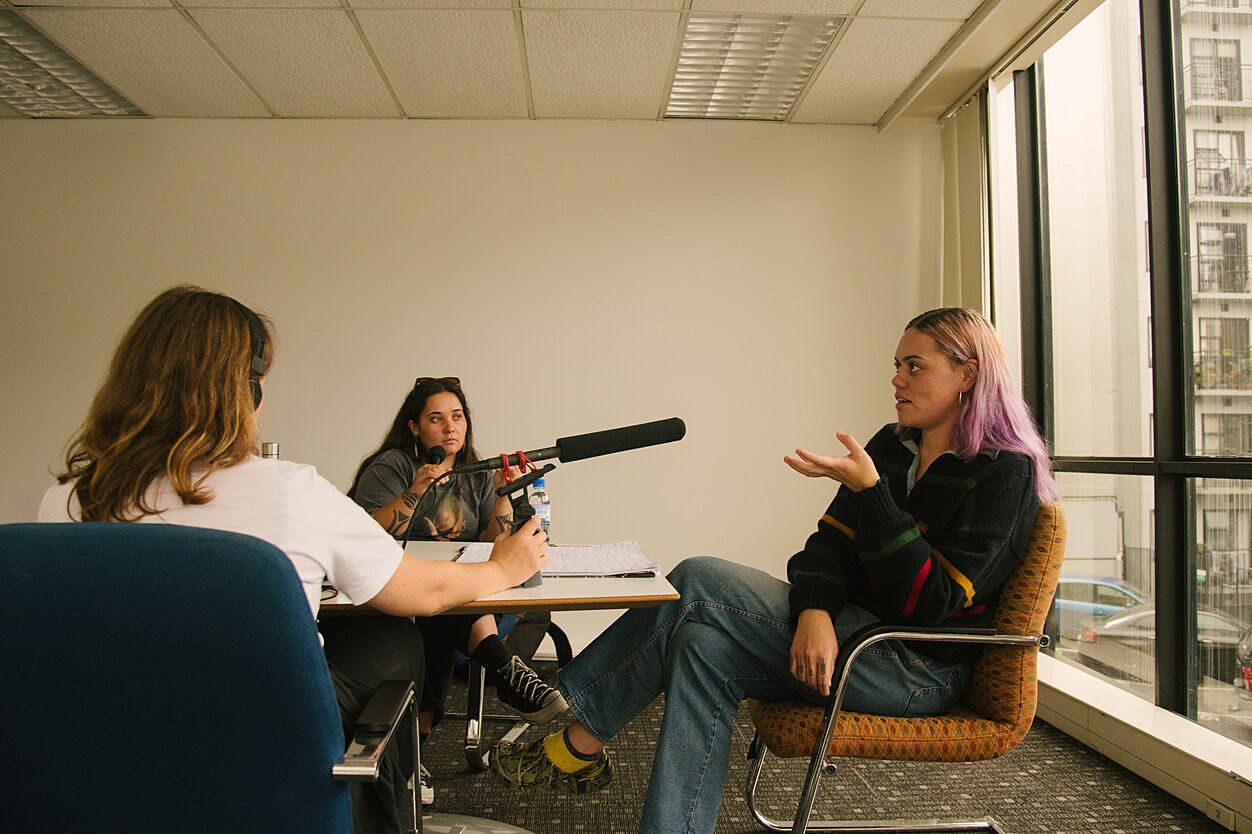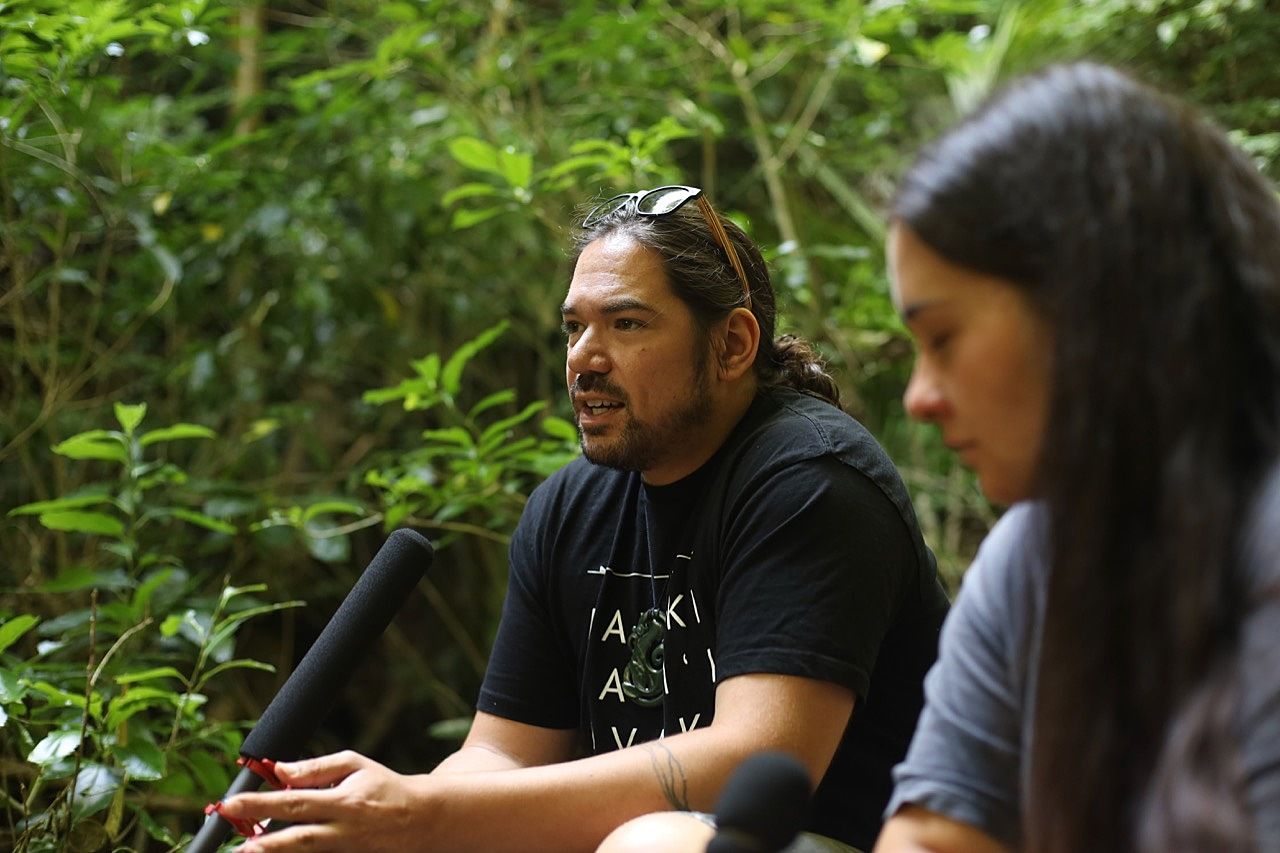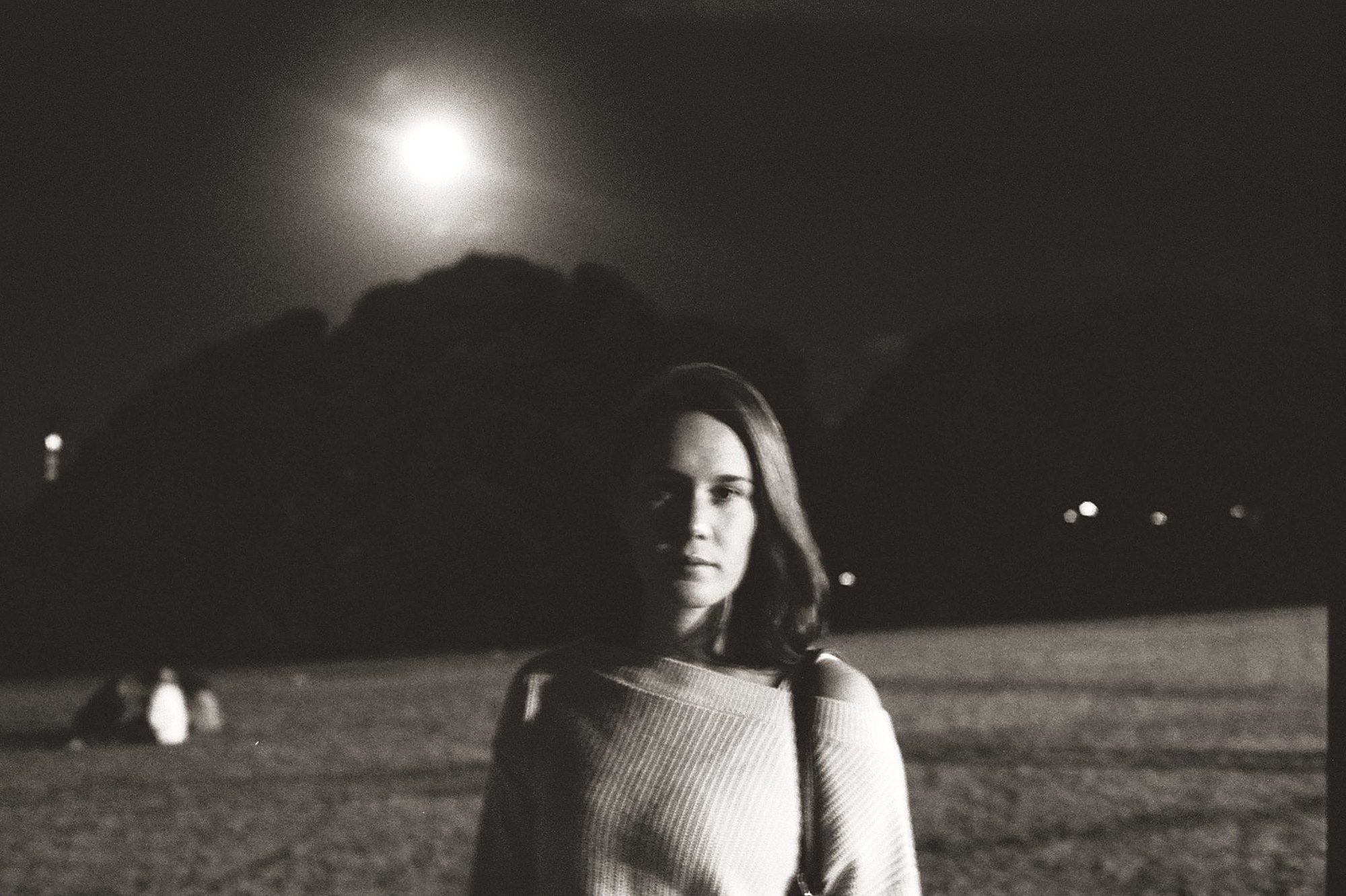A Māori Way to Listen
Michelle Rahurahu speaks with Kahu Kutia about building a uniquely Māori listening experience for the newest season of He Kākano Ahau.
Finally, the first episodes of He Kākano Ahau Season 2 have been released into the world. For the people who don’t have social media, haven’t spoken to their friends in years, and reside in a solitary beachside shack, He Kākano Ahau: Urban and Māori, is the podcast led by writer, researcher and storyteller Kahu Kutia. It explores the richness of te ao Māori today through luscious sonic storytelling, and is centred around the theme Wawatatia: Thinking of the future. This season is a seven-part series with new episodes released every Tuesday. I had the fortune of speaking with Kahu via Zui about the release.
Michelle Rahurahu: I was listening to the two episodes that are already out. There's poetry and music, especially in the taonga pūoro episode. There are so many layers that you've put in here. Can you talk about that?
Ruby Solly, Khali Materoa and Kahu Kutia for Episode 1: Pūoro in the City. Photo: Jessie-Lee Robertson
Kahu Kutia: There's a couple of strains to that. I love working with other creators and I really wanted to bring in more people to the project. I went to see wāhine Māori taonga pūoro quartet Maianginui perform at Third Eye last year, and the layers of poetry and music really inspired me. And so it was partly that. I wanted to collaborate with more people, especially for this kaupapa, and bring in more voices. I tried to get the interviews sent to the creators so they could respond with poems to the interview topics, adding this nuance to the discussions. And then I was thinking about being in wānanga and being physically in a whare. It's never just, like, talk, talk, talk, back, forth, back, forth; we hear waiata, we have moments of silence. And so I was thinking, what is a Māori way to listen and what is a Māori way to receive knowledge? I'm really privileged to spend a lot of time in physical wānanga spaces, but I'm conscious that a lot of people who listen to He Kākano don't have access to those spaces. I wanted it to be something that could bring them into these kōrero in the way that they naturally happen. Also, I have quite a short attention span and I don't want to hear 45 minutes of intense discussion. You know, I want to break it up; I want it to be restful and impactful. Bringing in all those layers really supports and uplifts the kōrero.
I love Māori creatives and I love Māori doing the mahi. I'm such a fanboy
MR: I think there's a lot of energy that you bring to this season. How do you find people? I'm super impressed by how the podcast has introduced me to new people and kaupapa.
KK: I just love creativity and I love Māori creatives and I love Māori doing the mahi. I'm such a fanboy. Some people I have followed on Instagram for a long time. Ranuimarz co-wrote an article on Salient, I think two years ago, talking about his whānau, the loss of his brothers and mental health as a tāne Māori, so reading that was when I first came to hear about his kaupapa. He's in Episode 3.
This season of He Kākano Ahau came right before lockdown happened and I was feeling quite fatigued in the activism space. I realised that I was working, working, working, and had lost sight of my theory of change and my physical world. I realised that you can't go about engaging with kaupapa mahi if you don't have hope, and if you don't have this big sense of what you want for the world. And so, again, that's where the joy and laughs and big hopeful kōrero comes from. An understanding that hope is so important if we're going to sustain our investment and kaupapa and all the mahi that needs to be done.
Ranuimarz. Photo: Dylan Cook
MR: Is there, like, a switch that happens in your brain when you're representing a story purely through sound?
KK: The thing that's different is there are these layers of sound that you can add. I come from a writing background – same as you. But with a podcast, we can add cooking sounds, we can add lunch being turned out. Season 1, with Ihumātao, we went and got chicken sounds. There are all these things that we can add to bring people into the space. You don’t have to be so obvious in the words that you use to narrate. You can add all this other stuff to help the listener understand the story, but not pushing things in their face. There would be moments where we're like, oh, we could use a really sad song for this, but it feels a bit tacky. A big thing for me is trusting the listener to get it, you know, and in a sense, it's not spoon-feeding them everything. Also, I think mainstream media would expect us to contextualise the use of te reo Māori. I was keen to leave it in the space and package it so people can hopefully understand and interpret it. And we've got two te reo episodes, which is very scary. Episodes 4 and 6 are in te reo, and that's not going to be something that everyone can understand, but, hopefully, people can get something from it anyway. I think a lot of us who are on our reo learning journey want to hear the reo sometimes and be in that space. So, yeah, hopefully people get something from it.
Te Aweawe's workplace. Photo: Dylan Cook
MR: Amazing! Ok, I was going to ask what's coming up, because I'm desperate for more.
KK: Episode 3 is mental health, mātauranga Māori. How can mātauranga Māori help us understand our internal world? How can the external world help us understand our internal worlds? Episode 4 is a Taiao ep, so that's in te reo Māori, and I go down to Invercargill and meet up with my kōhanga reo teacher, and he's preparing to go over to the Tītī Islands. Episode 5 is reimagining the justice system. It's very much an intro to abolition, so hopefully it's for people who've never really interacted with the idea of abolishing prisons. Episode 6, we talk to two second-language te reo learners about the journey of learning te reo, and we talk to Vini Olsen-Reeder, who was one of my lecturers at university, and a rangatahi from Auckland. And then Episode 7 is really cool. It's kind of about intergenerational vision. We have wānanga about futurism, whakapapa, how we understand the past and how we can think about the future.
Vincent Olsen-Reeder and Kahu Kutia talking about learning te reo as a second-language in Episode 6. Photo: Kirsten Johnstone
MR: Were there any, like, big challenges with any of the episodes? Or any tikanga you put in place to look after the crew or the people you're speaking to.
KK: In Season 1, our whole team went to A&E at some point, Ihumātao happened and Tapu Te Ranga burnt down. All these massive things happened that influenced our storytelling in the process. This season, there was none of that. The main challenge was thinking about how we tell these stories well. Knowing where and how to use trigger warnings. How do we balance really investigating the hard stuff whilst keeping people safe, understanding that you can't control where and how people listen to the podcast? Trying to make it clear from the beginning, like, hey, this is a hard episode. And then with the real hard interviews, using karakia. Basic things like having all of our interviews with kai. Simple stuff, really. For me, the main challenge was telling these stories in a way that made sense to the people we interviewed. And yeah, keeping that knowledge safe and respected.
MR: Ngā mihi aroha ki a koe, e hoa. I appreciate all the work that you do to get these nuanced stories. Listening to the podcast has been so enriching for me. I can’t wait to hear the rest of the episodes.
He Kākano Ahau is presented by Radio New Zealand
Feature image: Dylan Cook

